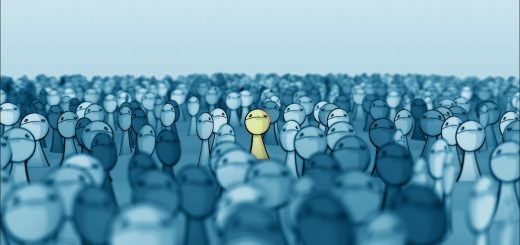To Live Forever: What the Hydra Teaches Us About Aging

Growing old and dying is thought of as an inescapable facet of life. Each of us either has or will face death at some point. Your family members will die; your friends will die; your pets will die; and one day, you will die. This may seem like a bleak introduction to what is – at least largely – an article about biology, but it is almost impossible to ignore the philosophical implications of the evolution of ageing and lifespan.
The Stoic philosophers of Ancient Greece believed that, in order to conquer the fear of death, one must come to terms with its inevitability. This sentiment was later conveyed with the Latin phrase ‘memento mori’, which translates to ‘remember that you will die’ and is to be interpreted optimistically as a reminder to make the most of the time we have. Though we have greatly extended human life-expectancy with the development of agriculture and modern medicine, here I will argue that humans cannot completely escape the process of ageing and eventual death; this ancient saying will remain relevant as long as there are humans alive to hear it.
The evolution of ageing is one of the enduring puzzles in biology and for the sake of clarity, a consistent definition is required. Though various nuanced definitions have been employed to describe ageing among specific groups of organisms, the most broadly applicable one describes it elegantly as ‘age-related changes that result in an increased probability of death’. Note that ‘age-related changes’ may also negatively impact reproductive success, physical fitness, or both, and can therefore be considered as additional indicators of ageing though there are some notable exceptions. Take menopause, for example. Females of our species (and possibly some cetaceans) will cease to ovulate with age, thus reducing their direct reproductive success. However, this process is physiologically regulated and it has been suggested that females benefit more – evolutionarily speaking – from raising kin than reproducing at a certain age.
Perhaps the most famous organism in the study of ageing is the freshwater hydra (Hydra magnipapillata). In a paper published in the journal Nature in 2014 by Owen Jones and colleagues, it was estimated that, based on demographic data showing that neither mortality nor fertility changed throughout the hydra’s lifespan, 5% of adult individuals would be alive after 1400 years under controlled lab conditions1. As the probability of death does not appear to increase with age, this led scientists to consider the hydra as a ‘non-ageing’ organism. An important note here – ‘non-ageing’ organisms simply do not age as previously defined, even if the probability of death is high, as is the case for hydra. Both humans and hydra can die for reasons which aren’t strictly the result of ageing, even under optimal living conditions.
As Alexander Khokhlov at Moscow State University explains, this apparent lack of ageing in hydra2 is due to the presence of interstitial stem-cells (or i-cells), which can give rise to both buds (somatic cells) and gametes. I-cells are thought to function infinitely as stem-cells under favourable conditions, providing a limitless ability to regenerate and replace senescent or damaged somatic cells. For this reason, some have awarded the hydra the title of ‘eternal embryo’. Indeed, under optimal conditions, H. magnipapillata lacks any senescent or post-mitotic cells (cells unable to undergo further divisions), suggesting they are capable of indefinite self-renewal. Only under certain conditions such as ambient temperature change are i-cells depleted, resulting in ageing-like processes and death.
Though indefinite self-renewal is certainly a crucial feature of the hydra that removes – or at least postpones – ageing, it is highly likely that ageing will eventually occur. We can reasonably assume that genetic mutations and other forms of molecular damage will accumulate throughout an individual’s lifespan, eventually increasing mortality. Though this is difficult to measure, it is a likely scenario. Somatic mutations can be removed by various forms of DNA repair mechanisms during mitosis, specifically, DNA mismatch repair (DMR)3, which directly removes base-pair errors in replicating strands of DNA. However, DNA repair mechanisms are not perfect, and some mutations will persist. Thus, genetic mutations and molecular damage should accumulate in self-renewing populations of i-cells which then give rise to progressively more decrepit somatic cells, consequently increasing the probability of death. If this is the case, the ‘eternal embryo’ is not so eternal after all.
Overall, there is strong evidence that molecular damage may accumulate even in the most long-lived organisms over time in the form of nuclear mutations as well as protein malformations and aggregates. Considering this – though molecular damage may accumulate very slowly – theoretically ‘non-ageing’ species can be predicted to suffer an increase in mortality or decrease in reproductive success as DNA repair machinery is not flawless, though this requires further research to confirm.
Following the discovery of our beloved eternal embryo, some have suggested that the hydra holds the key to solve the problem of ageing in humans. Perhaps stem cells are the key? If only we could engineer humans to possess indefinitely active stem cells like the hydra, then maybe we too could be eternal embryos…
Unfortunately, we are not little jellyfish-like polyps. A crucial trait of hydra polyps is that they completely lack a central nervous system, possessing only motor and sensory neurons, which are connected in simple networks via intermediate neurons and ganglia. These neurons – as well as all other somatic cells in the hydra – can be replaced without interrupting any important biological functions. This is not the case in vertebrates, including humans, where a significant portion of somatic cells – neurons, for example – do not divide when mature and accumulate molecular damage with advancing age.
“Perhaps modern medicine could find a way to replace these ‘ageing’ neurons?” you may be wondering. Alas, there is a very good reason why these cells cannot and should not be replaced. The problem isn’t that the body is incapable of replacing non-dividing cells, but that doing so comes at a serious cost to the organism. Replacing neurons in the central nervous system, for example, removes their unique connections and they will no longer be able to properly perform their functions. Considering that brains are immaculately complex webs of non-dividing cells, the replacement of ageing neurons comes at a steep cost to an organism’s ability to function, or at least, determine one’s individuality. In other words, complex brains (and other organs with irreplaceable non-dividing cells) are inherently accompanied by ageing. It is the evolutionary price we pay for consciousness; a sobering conclusion.
Would you rather be a conscious, thinking human, or a simple, biological robot which spends its immortal life forever adhered to a pebble in an aquarium?
As the Roman philosopher Seneca wrote nearly 2000 years ago: “It is not that we have a short time to live, but that we waste a lot of it. Life is long enough, and a sufficiently generous amount has been given to us for the highest achievements if it were all well invested.”
The author recommends those interested in Stoicism to read How to Think Like a Roman Emperor (Audible).
This article was specialist edited by Oliver Coombs OBrien and copy-edited by Domante Rabasauskaite










